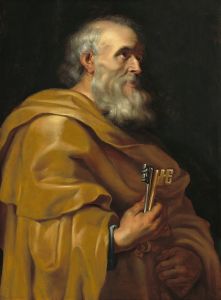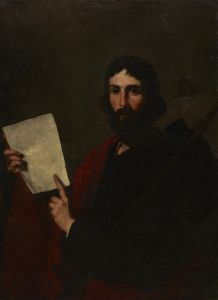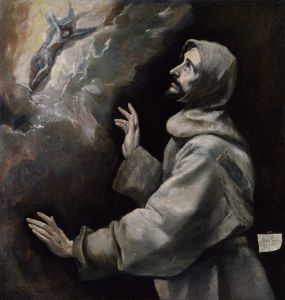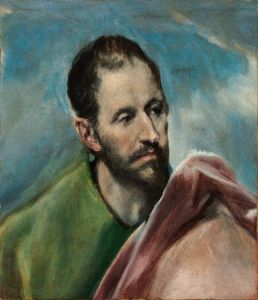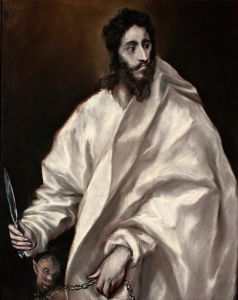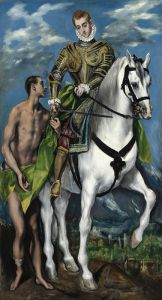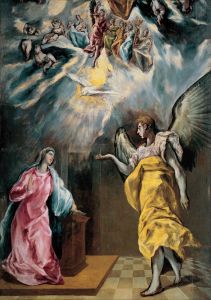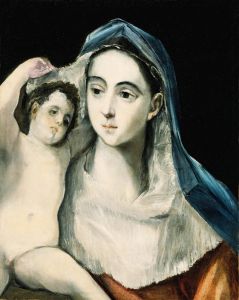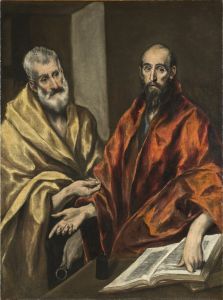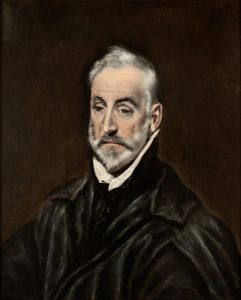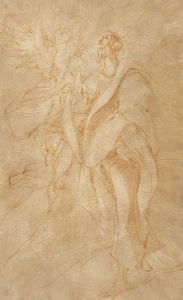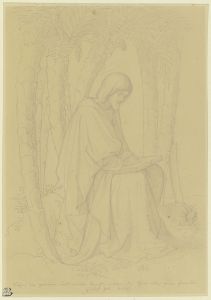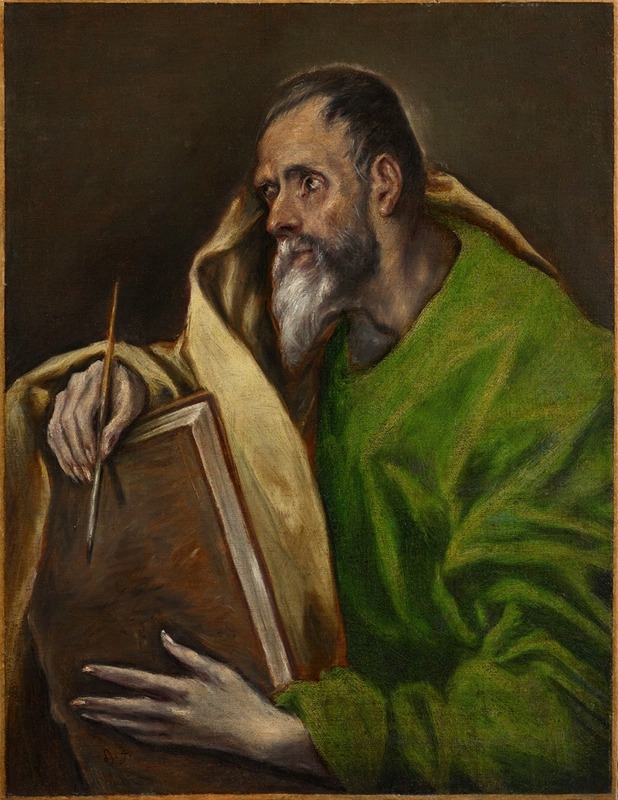
St. Luke
A hand-painted replica of El Greco (Domenikos Theotokopoulos)’s masterpiece St. Luke, meticulously crafted by professional artists to capture the true essence of the original. Each piece is created with museum-quality canvas and rare mineral pigments, carefully painted by experienced artists with delicate brushstrokes and rich, layered colors to perfectly recreate the texture of the original artwork. Unlike machine-printed reproductions, this hand-painted version brings the painting to life, infused with the artist’s emotions and skill in every stroke. Whether for personal collection or home decoration, it instantly elevates the artistic atmosphere of any space.
El Greco, born Domenikos Theotokopoulos in 1541 in Crete, was a prominent painter, sculptor, and architect of the Spanish Renaissance. He is best known for his distinctive style that combined elements of Byzantine tradition with Western painting techniques. One of his notable works is the painting of St. Luke, which reflects his unique artistic vision and mastery of religious themes.
The painting "St. Luke" by El Greco is part of a series of works depicting the apostles, created during his time in Spain. El Greco moved to Spain in 1577, where he spent the majority of his career, primarily in Toledo. His work during this period is characterized by elongated figures, dramatic use of color, and expressive compositions, all of which are evident in his depiction of St. Luke.
St. Luke, one of the four Evangelists, is traditionally believed to be the author of the Gospel of Luke and the Acts of the Apostles in the New Testament. He is often depicted as a physician and an artist, sometimes shown painting the Virgin Mary. In El Greco's portrayal, St. Luke is presented with a sense of spiritual intensity and introspection, a common trait in El Greco's religious figures.
The painting captures St. Luke with a contemplative expression, often interpreted as a reflection of his role as both a healer and a writer of the Gospel. El Greco's use of color in the painting is particularly noteworthy. He employs a rich palette, with deep blues and reds, which not only highlight the figure of St. Luke but also convey a sense of divine presence and otherworldliness. The background is typically less detailed, drawing attention to the saint himself and enhancing the spiritual focus of the work.
El Greco's style was influenced by his early training in the post-Byzantine tradition, which is evident in the elongated forms and spiritual intensity of his figures. However, his time in Venice and Rome exposed him to the works of Renaissance masters such as Titian and Michelangelo, whose influence can be seen in his sophisticated use of color and dramatic compositions.
The painting of St. Luke is a testament to El Greco's ability to blend these diverse influences into a cohesive and innovative style. His work was not fully appreciated during his lifetime, as it diverged from the prevailing artistic norms of the period. However, his unique approach to form and color has since been recognized as a precursor to both Expressionism and Cubism, influencing artists such as Pablo Picasso and Jackson Pollock.
Today, El Greco's "St. Luke" is celebrated for its emotional depth and artistic innovation. It stands as a significant example of his contribution to the art of the Spanish Renaissance and his enduring influence on the development of modern art. The painting is housed in various collections, with some versions or related works found in museums and galleries that hold El Greco's works, reflecting his lasting legacy in the art world.





